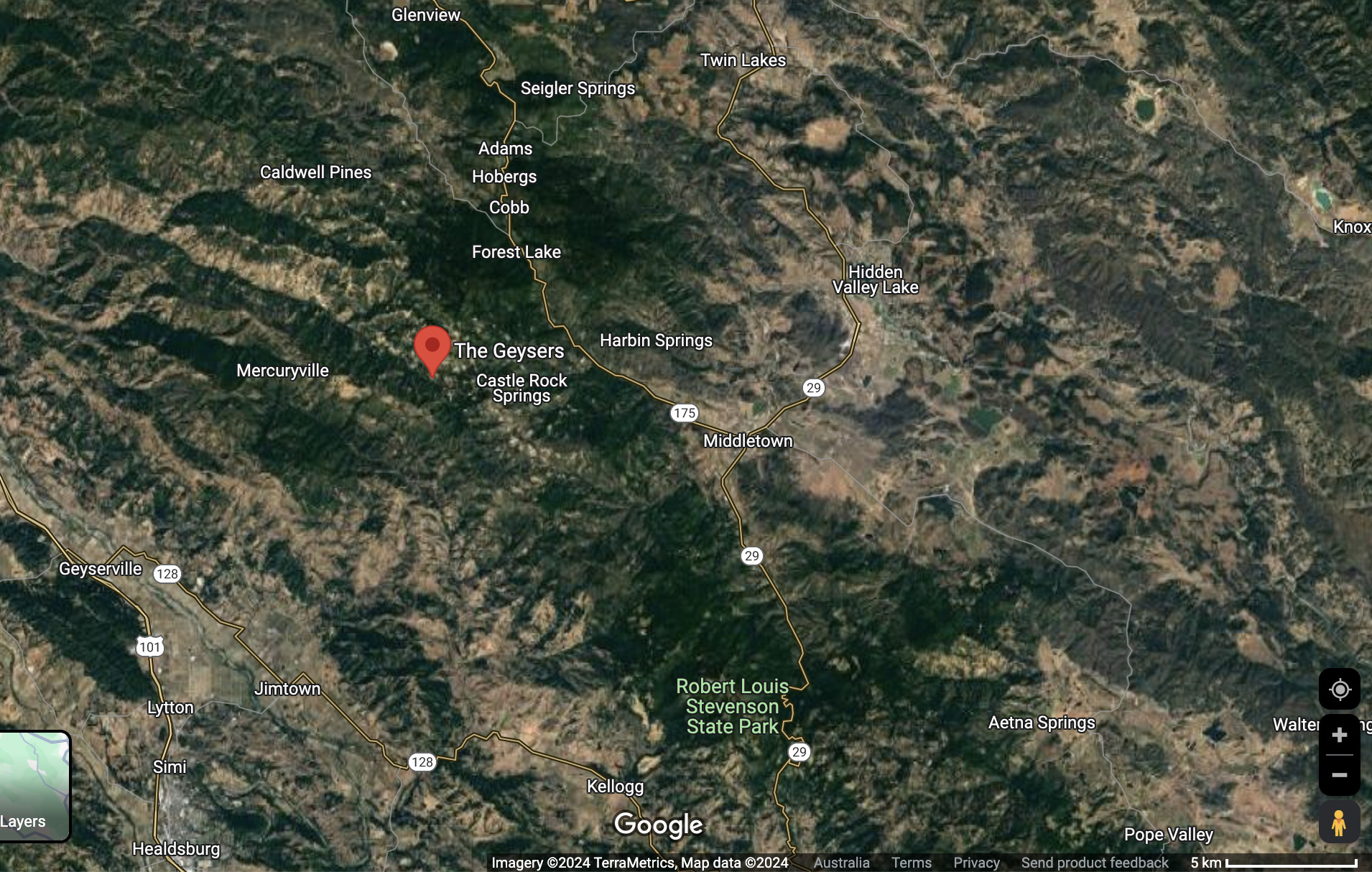The heat is on: Why the time and place is right for an Australian geothermal comeback

Pic via Getty Images
- Amid Australia’s Net Zero ambitions, long-neglected geothermal energy is primed for a comeback
- Australia’s unique geological factors, along with new global tech, new people and shifting perceptions are also factors for potential reinvigoration
- Australia’s Steam Resources has major plans in the works in the NT, SA and WA for the 24/7-operating, low-footprint, cost-effective renewable
Geothermal energy is back. Did it ever leave? As far as Aussie energy investment is concerned, it largely did. But why might this time be different? Stockhead spoke to Steam Resources’ Josh Puckridge to learn more.
When it comes to the energy conversation in Australia, geothermal – which, very simply explained is energy derived from the earth’s heat – has taken a back seat, actually the boot, over the past several years.
The chief reason for this, explains Josh Puckridge, is our reliance on thermal coal. Australia’s historical abundance of natural coal and gas has supplied the nation’s power needs while also being a significant component to the nation’s exports.
However, as The Simpsons once put it “the times, they are a… becoming quite different”.
Some 15 years ago, when geothermal was last being pushed with any sense of vigour in Australia, ‘Net Zero’ was more a target for Socceroos defenders than the growing global ESG zeitgeist.
But now, as Australia, along with 140 other nations, moves closer to an agreed 2050 deadline to meet net carbon neutral targets, geothermal power production has again become a hot topic for countries around the globe.
And, while up to 16 coal-fired power stations are scheduled to close around Australia over the next 25 years, Puckridge believes geothermal could well be “Australia’s dark horse in the race to Net Zero”.
‘The forgotten true renewable’
As the managing director of Steam Resources – a Perth-based company focused on unlocking the untapped potential of the planet’s largest stored energy source, specifically in the NT, SA and WA – Puckridge believes Australia’s geographical and geological aspects put it in a unique position for geothermal opportunities.
“Australia was super hot and bothered, if you’ll forgive the pun, for geothermal 15 years ago,” said Puckridge.
“It’s just been completely off the radar since. I attended the Geothermal Rising conference in Nevada late last year, and I was one of only two Australians there. I spoke to so many people who were remembering back to 2010 when piles of Australians were at a similar conference in Indonesia.
“The suggestion from the Nevada attendees who remembered that, was that Australia at that time was regarded as the geothermal capital of the world.”
Puckridge notes that South Australia’s various heat anomalies and regions along with the Beetaloo Basin in the Northern Territory and the Perth Basins of Western Australia each maintain the ability to develop geothermal projects with capacities well beyond 100MWe.
Australia has much deeper hot dry rock systems than you’ll typically find elsewhere on the planet. In fact, GeoScience Australia has estimated that the amount of heat in rocks less than 5km deep but over 150°C in temperature in our continent is over 1.9 x 1010 petajoules.
Translation? As a CSIRO report noted, it’s a resource estimate that suggests “the geothermal energy resource in Australia is practically limitless”.
“It’s the forgotten true renewable,” said Puckridge.
“It’s the prime renewable resource and a 24/7 source of power. We’re literally excavating heat to spin a turbine to create electricity.
“It works when it’s raining, when the sun’s shining, when the wind’s up, when the wind’s down. And its geographical footprint is so incredibly less invasive compared to alternatives such as wind and solar.”
Australia’s geothermal opportunity
When compared with global geothermal leaders, as well as some of our geographical neighbours, Australia is well down the pecking order in geothermal-energy output, but that could very well spell a great opportunity.
As Puckridge notes, the USA is the largest producer of geothermal power in the world, with an installed capacity of 3.9Gwe in 2023, followed by Indonesia with 2.4Gwe, the Philippines maintaining 1.95Gwe, Turkey with 1.69Gwe and New Zealand with 1.04Gwe.
In this same period, Australia is estimated to maintain an installed geothermal power capacity of no more than 1MWe, seeing Australia’s current geothermal power production practically non-existent.
“In context, a 1GWe geothermal plant could power 725,000 households per year and, in doing so by green energy, avoids the annual release of over 3,800,000 metrics tonnes of carbon emissions,” said Puckridge.
And, while many nations around the world manage their transition and investment into a carbon neutral economy with the addition of geothermal energy production, Australia’s Long Term Emissions Reduction Plan – published by the Federal Government in 2021 – makes no reference to geothermal power production.
“Geothermal deserves a second go,” added Puckridge. “There’s great interest for it around the world and it deserves to be in the government’s plans, which still has about 20% ‘to be determined’ in terms of where the energy actually comes from.”
He believes this will change as companies like Steam Resources bring new technologies and practices from overseas leaders such as the United States.
“While we adopt solar and wind power production into Australia’s energy grids, the contribution of geothermal energy should not be discounted. Geothermal power production, being carbon free and renewable, maintains many advantages over wind and solar making it a more reliable and longer-term solution to other renewables.”
Stacking up against alternatives
Puckridge believes geothermal power more than stands up against two of the biggest clean-energy narratives that immediately spring to mind – wind and solar.
“I think Australia’s falling out of love with a lot of wind solutions,” said the Steam Resources boss.
“The big Newcastle Offshore Wind project proposal, for instance, is getting a bit of pushback, while I know that some of the Victorian wind turbines face petitions to take them down on the basis of noise pollution and visual pollution.”
Puckridge believes geothermal is a far more cost effective, stable and efficient solution longer term, also noting that:
“One of geothermal’s main advantages over these other solutions is its actual footprint is very small.
“The biggest geothermal project in the world is the Geysers project in California, which has over 2Gwe of installed capacity. But if you go on Google Maps, you actually have to squint to find it.”

“So, in terms of environmental impact, it’s the equivalent of building a 4×2 home in the middle of nowhere. It takes up far less room than wind and solar and runs day and night. And a lot of geothermal solutions are turnkey, can run largely autonomously and require a lot less maintenance and long-term costs than wind and solar.
“On top of that, the commissioning life expectancy of a geothermal plant is 15-30 years – generally speaking, much better than solar’s. And when it comes to decommissioning projects, the economics are also vastly in geothermal’s favour compared with wind, solar and nuclear alternatives.”

Tech developments on the rise
Along with reasons already mentioned, Puckridge mentions developments in technology over the past several years that are also helping to push the neglected energy source’s narrative – particularly from geothermal world leader, the United States.
One such technology is being developed by Fervo Energy in Houston, which is employing what’s known as an enhanced geothermal system (EGS), in which water is injected into hot rock systems in order to stimulate the underlying system and bring that heat to the surface where it can be used to generate electricity.
However, Puckridge revealed: “The systems that we are looking at go one step further than this, by using supercritical CO2.
“Given we are behind the US in terms of timing, we might see Australia skip the EGS designs and move straight to the supercritical CO2 designs.”
“But the point is, we’re seeing really exciting technological developments in geothermal, which resonates particularly in what we’re aiming to do at a commercial scale – which would be to develop 100MWe+ plants.”
Beetaloo could be Australia’s Geysers
Steam Resources’ likely flagship operation will be in the NT’s Beetaloo Basin, where it will be constructing a pilot geothermal plant with strategic proximity to the port of Darwin.
The company’s estimates indicate the region contains 84,000 petajoules in stored geothermal energy, which is equivalent to about 3.7 billion barrels of oil.
“In the case of the Beetaloo Basin, we have the capacity to have a 1GWe province there, or more. We know the heat’s there, the total setting is there. The Beetaloo Basin could be Australia’s Geysers project.
“With the right amount of investment, it could be a +gigawatt source of totally renewable, low-footprint, environmentally friendly energy.”
“I envision that we can supplement a lot of power onto Australia’s grid that’s been decommissioned by way of losing local coal-fired power stations.”
What’s next?
Steam Resources is currently unlisted but has targeted some time later this year for its ASX debut.
By then, Puckridge says, the company will have identified a “path to feasibility” on its WA prospects as well as a significant exploration plan for the Beetaloo Basin project, along with its South Australian ground, which covers in excess of 46,000km2.
“Concentrating on seismic data gathering has been particularly valuable to us to help us get our ducks in a row regarding our exploration program,” noted the Steam Resources MD.
Funding interest, meanwhile has been “significant” said Puckridge, with further details to be provided as it manifests as this year progresses.
And what about competition?
“There’s not a lot right now. There’s Earth’s Energy, formerly Cradle Resources, who we follow and are excited to see their developments. While we’re both in geothermal, we’re not really competing as they’re going for a different model – sub 35MWe targets and projects in South Australia and Queensland.
“But I expect that by December this year, we’ll be seeing plenty more competition in geothermal in Australia.”
Related Topics
UNLOCK INSIGHTS
Discover the untold stories of emerging ASX stocks.
Daily news and expert analysis, it's free to subscribe.
By proceeding, you confirm you understand that we handle personal information in accordance with our Privacy Policy.








